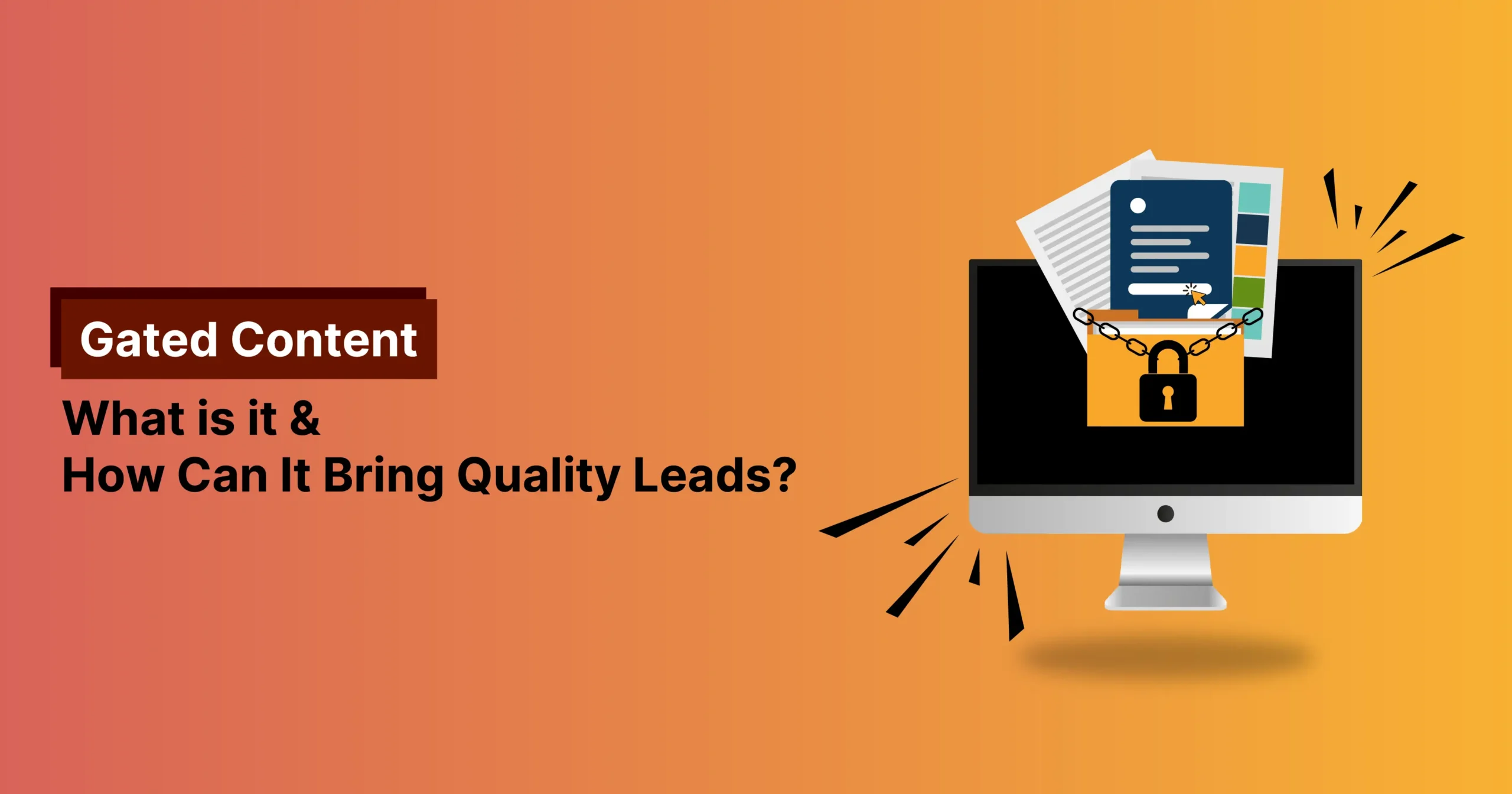
What is Gated Content? & How Can it Bring Quality Leads [7+ Best Practices]
Consider yourself a character in the famous novel “Harry Potter and the Philosopher’s Stone”. You’re at Hogwarts, and there’s a precious stone — promising immortality!
But just as the excitement kicks in, you realize — you can’t access it freely!

That stone is hidden deep within the castle — accessible to those who pass challenges with the right knowledge, skills, and intentions.
Now, let’s get back to the real digital world. Like the metaphoric Philosopher’s Stone, valuable digital content is often locked behind invisible gates, accessible only to those who meet specific requirements.
And, those contents are referred to as Gated Content.
So,
- What are the possible access requirements?
- Why would someone hide their valuable content?
- How can your business benefit by gating its content?
Well, we’ll answer all and more in this article. Buckle up!
What is Gated Content?
Gated content is the high-value material that requires users to provide personal information, typically via a form, before gaining access. It’s a common practice for lead generation to gather prospect’s data; such as — name, email address, job title, and more.
Typically, gated content consists of:
- Ebooks
- Webinars
- Industry Insights
- Free Software Trials
- Downloadable Templates
Here is a free product trial example from the FluentBooking website:
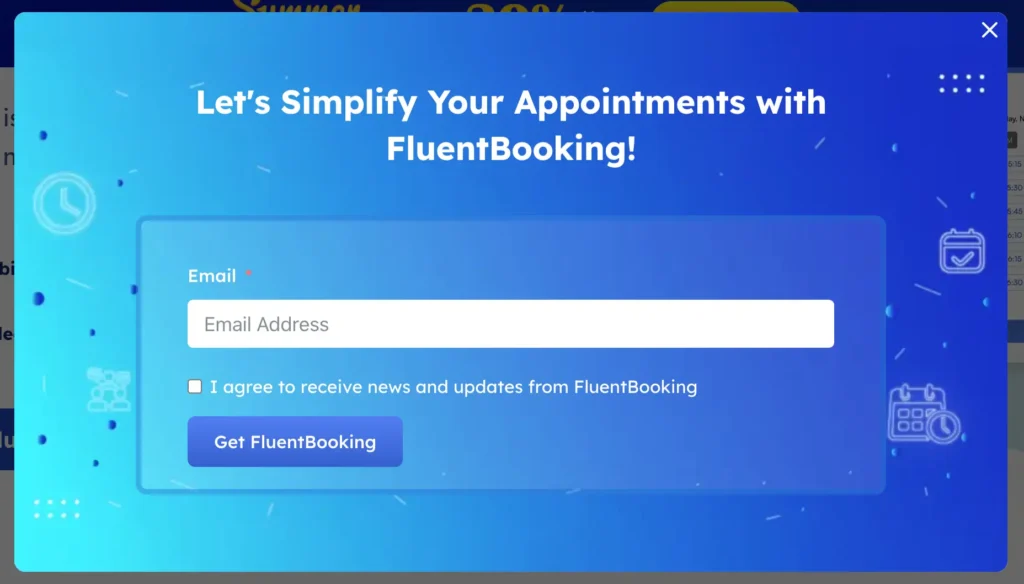
How Does Gated Content Work?
When a user lands at your website through blog posts or social platforms, they’ll see pop-ups or a CTA — it’ll allow them access to the high-valued content in exchange for their personal details as mentioned before.
Now, why does a business need to gate its contents?
The answer is simple, to:
- Generate leads
- Build email list
- Nurture relationship
Since a business is built around prospects, these are ideal matrices for marketers to keep an eye on.
80% of B2B content marketing resources are gated.
– Scoop.it
Moreover, keeping valuable content gated is one of the ideal inbound marketing strategies. It allows you to identify the user intent.
When users opt for hidden content, they (probably) have grown a strong interest since they are willing to trade their information to receive it.
Gated vs Ungated Content
Now you know, what content gating is and how it works. But, you might still be wondering about ungated content and how it differs from gated content.
Let’s dive into this right away.
Aspects | Gated Content | Ungated Content |
Purpose | Lead generation | Building brand awareness |
Accessibility | Accessible after filling out a form | Freely accessible to all |
Examples | Ebooks, webinars, PDFs, software trials, etc | Blog posts, articles, documentation, infographics |
Audience | Attracts a more targeted audience | Attracts a wider range of audience |
Offering | High-value content in exchange for personal information | Free access to high-value content to build trust |
Why & When Content Gating is Required for Business?
In the ending scene of Shutter Island, Teddy Daniels asks this haunting question:

Now, the question of when to gate or ungate content holds a similar resemblance.
Whether content gating is required or not depends on some key aspects:
- Lead Generation: When the primary goal of business is capturing quality leads, gated content works like a charm. Lead generation is by far the most significant factor for gating content.
- Targeted Marketing: When you wish to segment your contacts based on preferences, interests, job titles, or behavior — gated content will allow you to do that.
It helps you build more personalized marketing strategies around the acquired leads.
- Competitor Strategies: Competitor analysis is a key strategy in business and when all your competitors are using a content-gating approach you should also go for it.
- Value Proposition: If your content holds significant value, you should opt-in for gating your content. Ask visitors to share their personal details when your material is really helpful to them.
- Revenue Generation: Well-promoted gated content can contribute hugely to revenue generation by driving traffic or increasing sales.
E.g. FluentCRM provides free access to its plugin, after assessing the product many users decide to go for the premium plugin due to the quality and user-friendliness of FluentCRM.
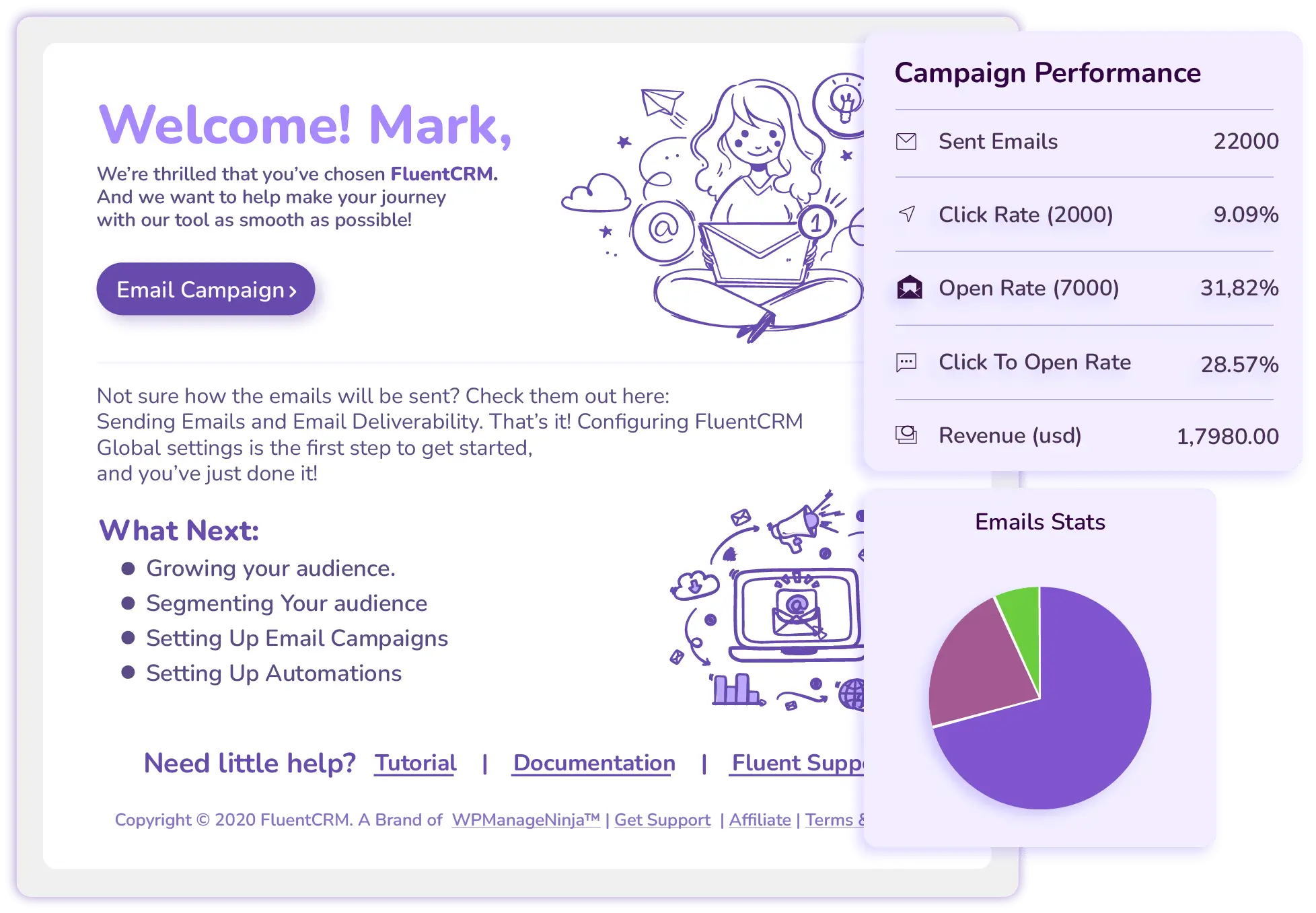
So, When Should You Ungate Content?
Now we know when it’s necessary to gate contents. But, the mystery of not gating content is still there!
So, content is ungated, when:
- Brand awareness is the primary goal
- Your gated content isn’t generating leads
- Competitors giving free access to their contents
- Content gating has already generated a significant number of leads
- Your content is outdated and not worthy enough to capture the attention
7+ Best Practices for Creating Gated Content
Since people will share their personal information, your content (must) needs to be worth the exchange.
But, having great content won’t be enough to guarantee you potential leads. There are other key factors to consider if you really want your gated content to see success.
They’re:
Analyze Competitors to Identify Prospects Needs
Before you decide to gate your content, first, identify what your prospect might be looking for based on your industry’s needs.
To do this, analyze your competitors and see what kind of gated or ungated content they’re offering to their visitors.
This will give you a solid starting point to brainstorm and plan your next approach. But, before you start, make sure to answer these key questions:
- Who are your visitors?
- Where are they in the buyer’s journey?
- What form of content will motivate them?
Create Content for Each Buyer’s Stage
A buyer moves through three key stages, from prospect to potential customer. To guide them, create gated content for all there components of the buyer’s journey.
Let’s look at where your content should shine at each stage of the lead generation funnel:
- Awareness: Focuses on educating the prospect
- Consideration: Focuses on offering detailed analysis
- Decision: Focuses on providing hands-on experience and solution
Well, now you know the purpose your content should serve to draw the attention of your prospect.
But, the question remains:
- What contents should you gate in each stage?
- Why will they work?
Let’s also shed light on this:
Stages | Gated Content Format | Why They Work |
Awareness | eBooks, Whitepapers, Reports, PDFs | Will educate prospects on their problems |
Consideration | Webinars, Case Studies, Podcast | Provides detailed understanding that will educate prospects on their specific problems |
Decision | Product Demo, Tutorials, Free Trials | Allow the prospect to explore free solutions and potentially turn them into customers |
A/B Test & Decide Right Gated Format
Gating content involves many ways. There are many aspects connected with developing gated content. Some of those aspects are:
- Headline
- CTA button
- Form style & length
- Landing page style & copy
- Color, fonts, and other design elements
As you can see there are so many things to keep an eye on. To find the right format, go for the A/B testing approach.
To give an idea, we suggest —
- Create different gated variants based on your potential audience
- Experiment by mixing and matching different elements with a plan
- Track which gated format performs best
- Segment contacts based on the top-performing variants
Provide Valuable Incentive
Imagine you’ve visited a site and they’re asking you to share your details to get access to a mere blog post. Will you be ready to share your personal info?
Well, in most cases — probably not!
Since your visitors will share their personal details, your gated content must go beyond the limit of their expectations to get them to share their details.
For that, your content needs to be high-valued which isn’t available on the web. You need to:
- Offer insights
- Share expert knowledge
- Solutions to visitor’s existing problem
Allow Quick Access to the Gated Content
Your visitors will be eager to get their hands on the content right after they fill out the forms.
For that, make sure to clearly explain how they can access it. There are numerous ways many business websites give access. You can try:
- On-Page Access: Let visitors download or view the content right after submitting the form.
- Access via Page: Redirected subscribers to a new page where they can access the content
- Access via Email: Send the download link directly to their inbox.
Whatever method you choose, ensure they can get to the content quickly. Delays can frustrate users and may even hurt your chances of further lead nurturing process.
Create Appealing Opt-in Forms & CTA
“You never get a second chance to make a good first impression.”
– Will Rogers
We too agree with the above statements. For gated content, the first thing a visitor will notice is the opt-in form and headline. These are your golden opportunities to catch their attention and encourage them to engage with your content.
Plus, your CTA (call to action) should guide visitors on what to do next — whether it’s filling out a form or moving to another landing page.
This is why, your CTA needs to be:
- Clear
- Direct
- Actionable
Design Landing Pages That Attracts
A few days ago, we were browsing through a website and came across a CTA, it took us to a different landing page with an opt-in form to access their content.
At times, you might also choose a similar approach. If you do, it’s essential to develop landing pages that are user-friendly and easy to navigate.
Additionally, it is highly likely your landing page will contain an opt-in form so it’s crucial to keep your form:
- Short and simple
- Only asks for essential information
- Provides immediate access to the content
Segment Contacts & Measure Analytics
Once your gated content is prepared and visitors start interacting with it, you’ll see potential leads coming in who could become customers soon.
To convert those leads, it’s important to segment your contacts. One of the biggest benefits of segmentation is — the clarity it gives you to target specific groups and run personalized email marketing campaigns.
Quick Read: Understand the benefits of customer segmentation and why it’s necessary.
Also, keep an eye on how your gated content is performing — are visitors interacting with it?
And, as your email campaigns are underway, track the email marketing KPIs to see how many people are engaging or converting.
Pros and Cons of Gated Content
Gated content sounds great so far, but does it really come with only pros? Can it really be that flawless?
Well, in the real world, nothing is perfect — everything has its flaws, whether just a few or a bit more.
So, let’s find out the contrast between the pros and cons:
Pros | Cons |
Captures valuable leads | Discourage visitor who wants instant access |
Creates a sense of exclusivity | No SEO benefit & lack of brand visibility |
Gather valuable insights for targeted marketing | Additional steps may hamper user experience |
Opens contact segmentation and personalization opportunity | Limit content exposure in reaching a mass number of the audience |
Few Gated Content Examples
Only our words won’t justify or give a clear idea of gated content if there are no examples given.
Let’s check some gated content examples:
#1 FluentBoards
FluentBoards is a project management plugin for WordPress — offering a free trial to its website visitors!
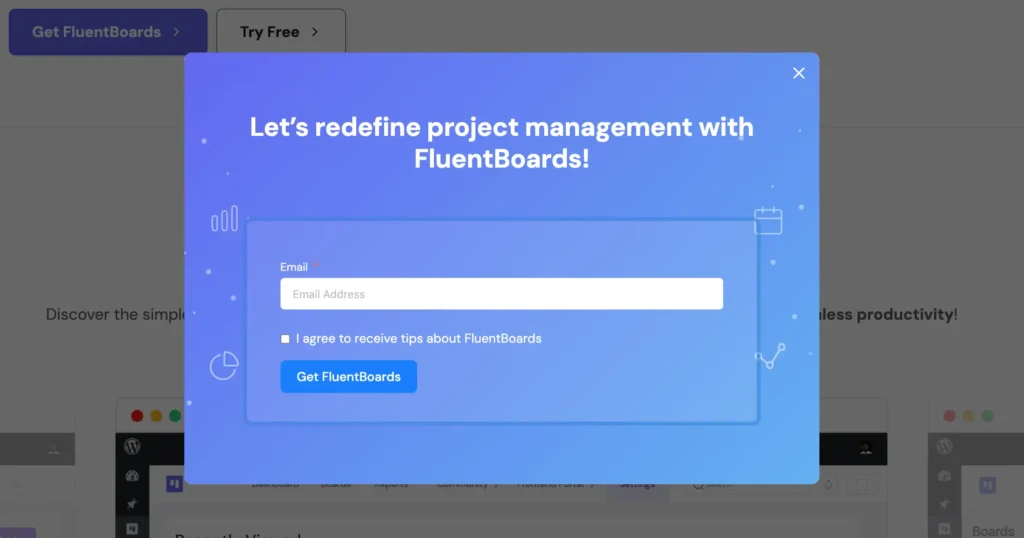
To get the free version, visitors simply need to enter their email address, and once they do, the product zip file is automatically downloaded. It’s a quick and easy way to start using the product right away.
#2 Ninja Tables
Ninja Tables is a table builder plugin that allows the creation of interactive tables and charts. They offer a variety of built-in table templates for website visitors or users to use while designing their own tables with Ninja Tables.
However, these templates are gated, meaning visitors can only download them after sharing their email and name.
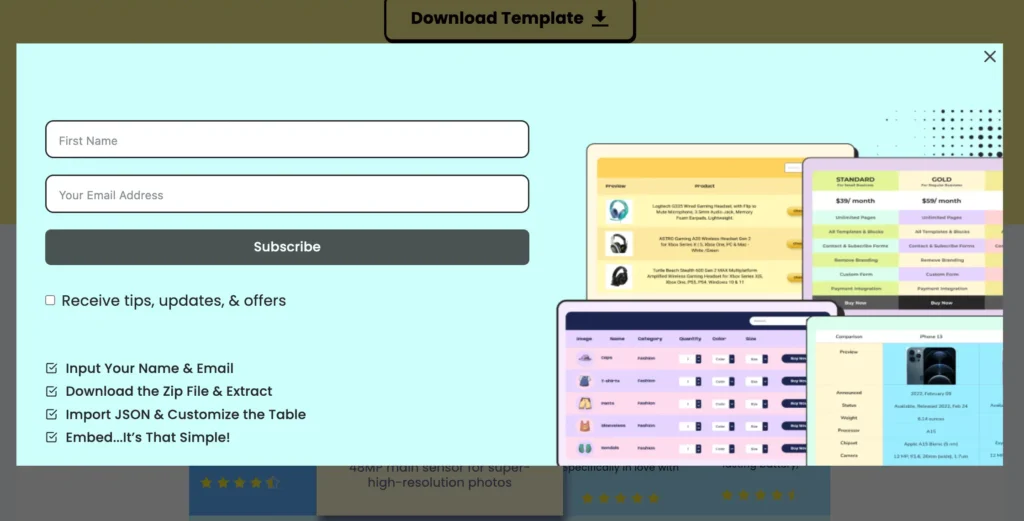
What we really liked about their opt-in form is the transparency — they clearly explain how users can use the downloaded templates, and they even offer an optional checkbox to receive further updates via email (if a user wants to).
#3 Tidio
Tidio offers in-depth research reports and strategies on various topics. These reports or ebook are locked behind a form.
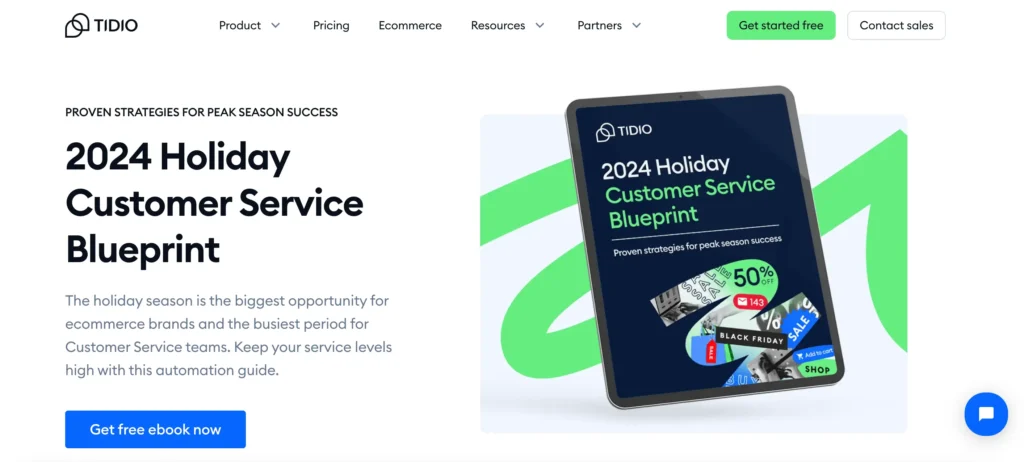
When visitors click to download these guides, they’re taken to a new page where they can fill out a form with their work email and business details to access the content.
Quick Read: Ready to set up gated content for your WordPress website? Well, try reading our guide on How to Create and Add Gated Content to Your WordPress Site.
To Gate or Not to Gate – You Decide
Still, wondering whether to gate your contents or not? Well, we believe — it’s your call and solely depends on your priorities.
The baseline should be — with the right intent both gating and non-gating strategy works like magic.
- If brand visibility is your priority — try ungating your content.
- If lead generation is your goal — (definitely) try gating your valuable content.
When done right, gated content can bring in quality leads for each buyer stage, giving you options to run campaigns by personalizing your emails based on many contact segments and bringing in better revenues.




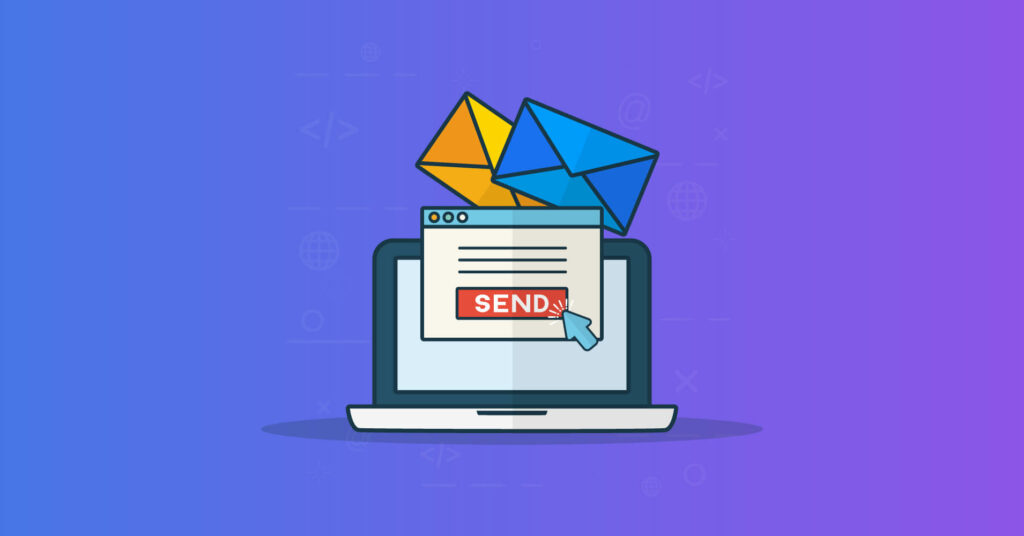
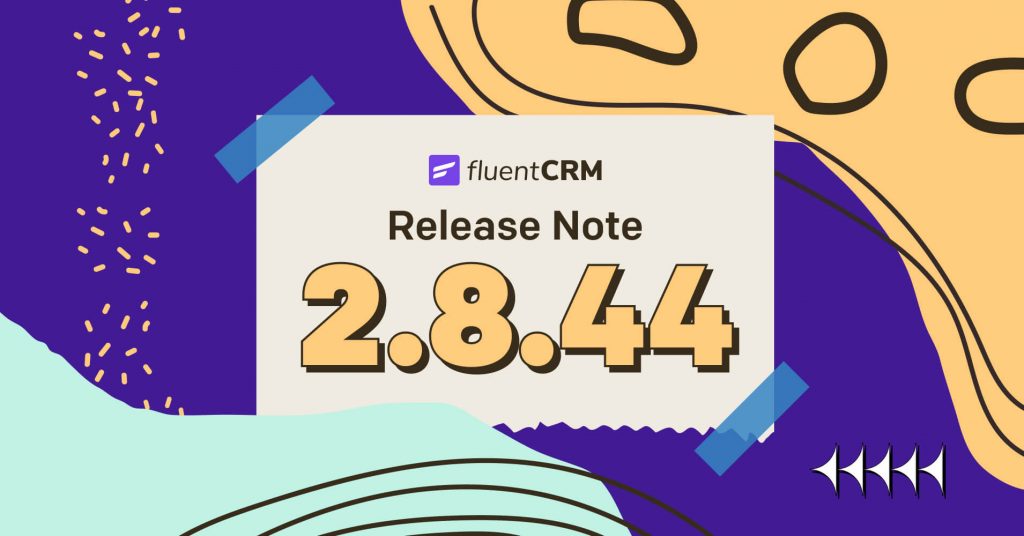

Leave a Reply